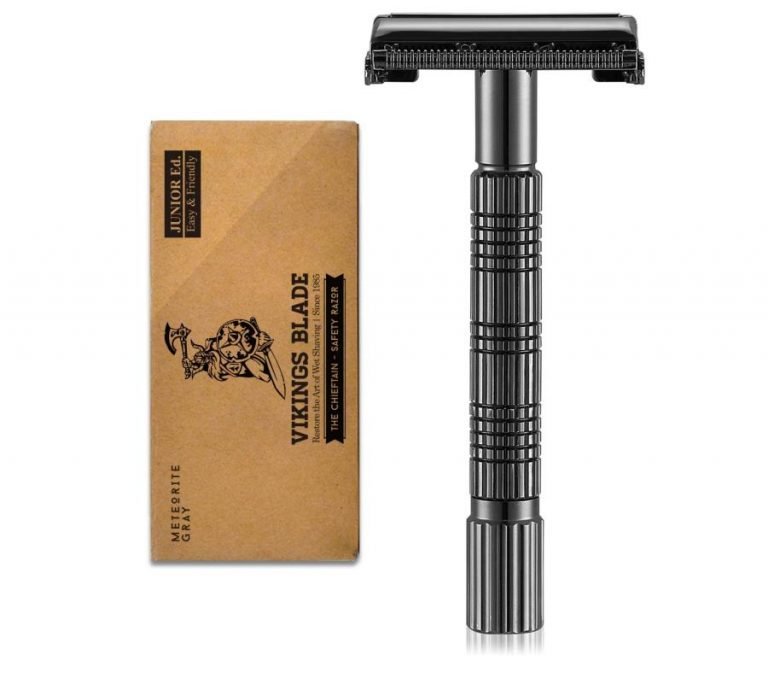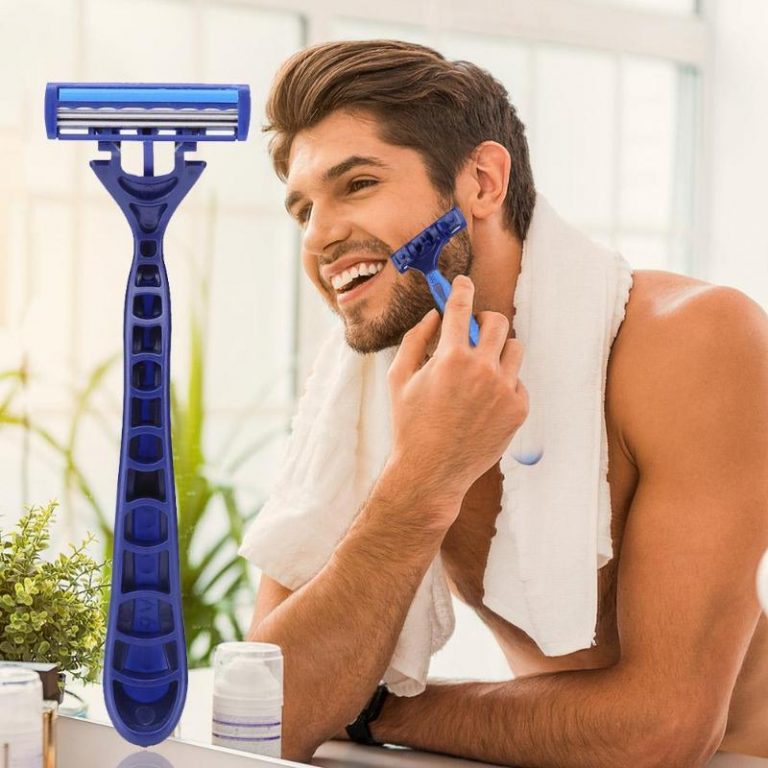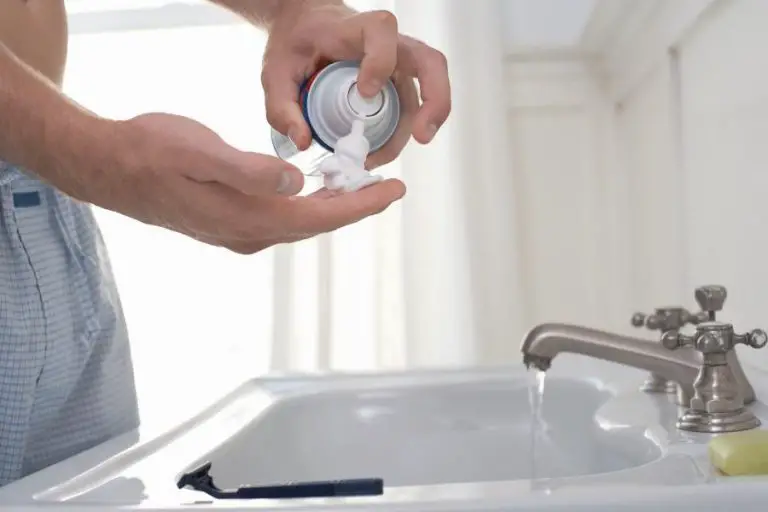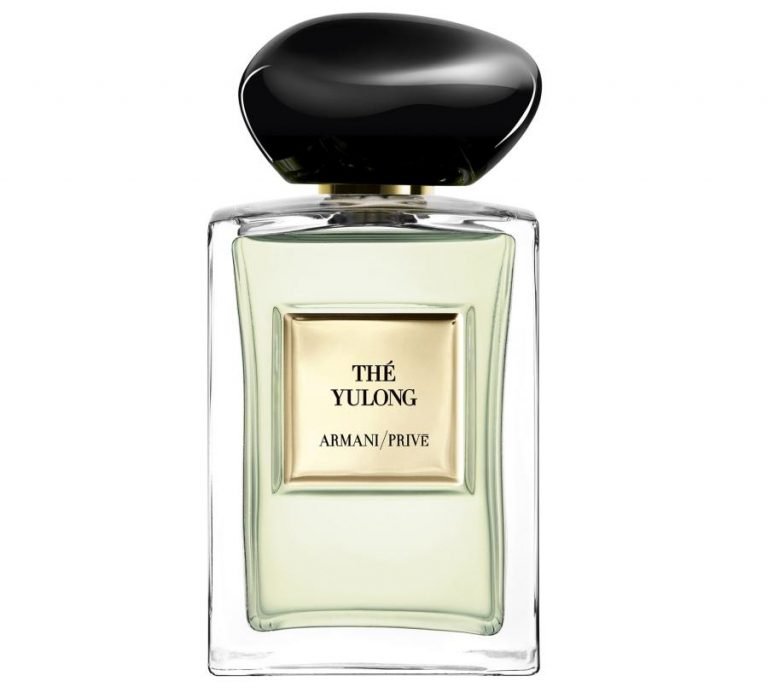Seven Reasons Your Neck Is Red After Shaving & How To Prevent It
Most men know that sometimes after shaving, your neck gets red, or you see red bumps appear. This red rash or red bumps on your neck is called razor burn.
The most common reasons your Neck Is Red After Shaving are:
- Using an old razor
- Shaving against the direction of hair growth
- Shaving with no lubricant
- Using a clogged razor
- Shaving in a hurry
- Application of irritating shaving products
- Over-shaving

Contents
- What Is A Razor Burn?
- 7 Ways You Are Most Likely to Get A Red Sore on Your Neck
- How Do You Prevent Your Neck from Turning Red After A Shave?
- How Common Are Razor Rashes?
- Herbal Remedies For Razor Burns Include:
- How Else Can You Treat Razor Burns?
- 1. Cold washcloth:
- 2. Apply a moisturizer:
- 3. Over the counter medicine or home remedies:
- 4. Oatmeal bath:
- 5. Hydrocortisone cream:
- 6. Calendula cream:
- 7. Warm and cold compresses:
- 8. Downgrade the blades:
- 9. Shave in circular motions:
- 10. Avoid trying too hard to get a close shave:
- 11. Approach the hairs from different angles:
- 12. Change the comfort setting on your shaver:
- 13. Heal bumps:
- Additional Tip
- Take-Home
- Understanding Razor Burn and Its Complications
- Prewash for a Perfect Shave
- • Quality Shaving Products
- • Blade Maintenance
- • Aftershave Care
- • Neck Care is Vital
- • Opt for Lubricant Strips
- • When to Consult a Dermatologist
- • Understanding Razor Burn
- • Razor Burn is not Razor Bumps
- • Remedies and Treatments for Razor Burn
- • Incorporating Good Shaving Practices
- • Importance of Quality Razors and Post-Shave Care
- • When to Seek Medical Help
- Understanding Razor Burn and Its Implications
- • Razor Bumps: A Closer Look
- • Treatment Options for Razor Burn
- • Prevention is the Key
- • Understanding Ingrown Hairs and Razor Bumps
- • Role of Hair Type and Skin in Razor Bumps
- • Tips to Avoid Razor Bumps
- • Importance of Post-Shave Moisturization
- • Considering Alternative Hair Removal Methods
- • Managing Existing Razor Bumps
- • Seeking Medical Advice
What Is A Razor Burn?
If you have experienced a red rash on your neck after shaving, you probably have suffered from a razor burn. As long as the razor is your go-to shaver, your shaving routine will likely end in a razor burn on one or two occasions. A red rash is characterized by tenderness, itchiness, and a burning sensation. Sometimes it manifests as red bumps on the affected area. These symptoms can appear on any shaved part of your body. From your underarms to your legs, and face, no shaved body part is exempted from red rash symptoms. In worse cases, the condition may manifest in all these regions when shaved. However, these symptoms are temporary. They disappear over time.
But these symptoms can cause a lot of discomfort. If you are plagued by a red rash that is causing discomfort, then this article is for you. Here, you will learn some simple things you can do to get rid of the rashes and how to prevent them in the first place. Before diving into these useful tips on treating and keeping red rash at bay, let’s first find out some of the most typical causes of red rash after a shaving episode. Red sores can occur for several reasons, most of which can be avoided.
7 Ways You Are Most Likely to Get A Red Sore on Your Neck
1. Using an old razor
Old razors are likely to blunt and make you press on the skin more. This increases the chances of hurting your skin and getting a red rash.
2. Shaving against the direction of hair growth
Human hair, its location notwithstanding, grows in a particular direction. Shaving in the opposite direction of hair growth gives the blades a rough time trying to cut down the hair. Chances of cuts and abrasions increase in the process, leading to red rashes.
3. Shaving with no lubricant
Lubricants such as shaving cream, soap, or even water decrease friction during shaving. If the skin is not lubricated during shaving, the blades entangle with the hairs, leaving redness and itchiness behind.
4. Using a clogged razor
Razors can get clogged with soap, hair, or shaving cream. A clogged razor has reduced efficiency. Razors with clogged blades result in bluntness, which makes shaving painful or excruciating in some cases.
5. Shaving in a hurry
Sometimes waking up late can leave you little time to prepare appropriately for your shaving exercise. You may choose a blunt, overused, or old razor because you’re in a hurry. You also forget or ignore to apply shaving lubricants. Less time to organize yourself for a shave can lead to mistakes, including cuts, abrasions, and red rashes.
6. Application of irritating shaving products
Applying shaving products that irritate your skin can lead to red rashes. Some alcohol-based products have been found to irritate when they come into contact with freshly-shaved skin.
7. Over-shaving
Shaving one area too often can lead to abrasion, cuts, and redness. Too many passes on a specific skin area will most likely result in a red rash.
How Do You Prevent Your Neck from Turning Red After A Shave?
With good shaving habits, you can keep razor burns at bay. To make shaving a more enjoyable and satisfying experience, consider the following tips and tricks:
1. Apply a lubricant before shaving:
The lubricant can be either soap, water, or shaving cream. Shaving dry skin doubles the chance of an irritation occurring. To have a smooth shaving experience, soak the area to be shaved in lukewarm water for 4 to 6 minutes in a shower or bath. Then apply a shaving cream over the skin surface to keep the area moisturized while you shave.
2. Select the right razor for the job:
Using a safety razor instead of a multiple blades razor helps prevent razor burns and itchiness after a shave. Safety razors can glide more closely to the skin, allowing for a closer shave in reduced swipes. This technique tops the list for preventing skin irritations during shaving.
3. Shave using a sharp razor blade:
To protect your skin from razor burns and nicks, it’s imperative to use a sharp razor blade when you shave. Avoid the temptation of pulling your skin too tightly during a shaving exercise. Use short and light strokes when shaving, and rinse the blade regularly during the shaving exercise.
4. Shave only in the direction your hair grows:
If you have sensitive skin, shaving in the direction of hair growth is imperative to avoid irritation. Shave in steady and light strokes and do so slowly.
5. Replace the blade or razor regularly:
If the blade feels blunt on your skin, pulls on your hair, or gets rough, it is high time you consider a replacement with a new one. In case of bumps, use a safe hair removal procedure or electric razor to remove the hairs, which increases the chances of getting razor cuts.
6. Rinsing after a shave:
After a shave, rinse the skin with water or use a wet washcloth to close the pores. Using cold water or a cold washcloth is preferable. Exfoliate your skin daily to remove dead skin cells from your skin. To remove dead skin by exfoliation, gently scrub the skin before the shave.
How Common Are Razor Rashes?
Most people are accustomed to shaving as the only means to eliminate unwanted hair. However, shaving also leaves us with red patches of inflamed skin, especially on the neck region, where most daily shaving happens.
A red rash is common. Most of the people who shave have had the experience of a razor burn at least once in their lifetime. Others have experienced the condition during every shaving session. If you are a victim of frequent razor burns, this section details things you can do to soothe the skin and lower the likelihood of them occurring again.
Herbal Remedies For Razor Burns Include:
1. Aloe Vera
Aloe Vera is best known for healing and soothing burns. Aloe Vera has the potential to heal both second and first-degree burns. You only need to apply a small amount of Aloe Vera onto the skin for a razor burn. The gel can be found in most pharmacies near you, or you could acquire it from a natural Aloe Vera plant.
2. Coconut oil
The oil is mostly used for cooking, even though it can also be used as an ointment. Coconut oil is an effective and safe therapeutic method for treating burns. Coconut oil is known to contain antiseptic and anti-inflammatory properties. Apply a small amount of purely pressed coconut oil to inflamed skin and spread gently.
3. Sweet almond oil
Almond oil is derived from almond kernels that are well-dried. It’s a superb natural moisturizer and serves as an excellent emollient. The oil must be applied directly to the skin to be effective. However, if you are allergic to almonds, you can use Tea tree oil.
4. Tea tree oil
Tea tree oil has both antimicrobial and anti-inflammatory properties. It is used as a perfect remedy to soothe and heal razor burns. However, it’s not advisable to use it in its undiluted form. This is mainly because the oil can cause allergic reactions and irritate the skin. Mix the oil with coconut oil or sweet almond oil to dilute the tree oil. Three drops of tree oil should be used for each teaspoon of almond or coconut oil. Remember to do a patch test on your skin to determine if you are allergic to the tree oil before use on red rashes.
5. Witch Hazel
Hazel is an anti-inflammatory and a natural astringent. Its tannin content makes it a perfect remedy for soothing burns, relieving pain, and treating mild skin irritation. The Hazel should be applied on the razor burn using a cotton pad in small quantities until the area is fully covered.
6. Baking Soda paste
Soda paste provides a cooling effect on the skin and is believed to draw out pain and heat from the affected area. However, there is still no scientific proof to support this argument. To make a paste, mix baking soda with filtered soda and stir to form a thick paste. Apply the mixture on the affected area and leave the paste to dry and clean with water thoroughly until the paste clears.
7. Lemon juice
Lemon juice is acidic and stops bacteria from infecting open pores. To soothe a burn, apply lemon juice to the affected area to prevent infection and reduce the redness.
8. White Tea
White tea is also an effective way to eradicate razor burns. Tea bags contain tannic acid, which helps lower inflammation. To use, dip the tea bag in water until it is wet and gently place it on the neck’s red spot to lower the swelling and redness.
How Else Can You Treat Razor Burns?
If you get a razor burn, other ways exist to alleviate the pain and eliminate the redneck. Treating a razor burn can be as simple as waiting it out to heal alone or using skin-friendly methods to reduce the symptoms.
1. Cold washcloth:
To alleviate itching or heat on the affected part, apply a cold washcloth on the affected part of the skin. Alternatively, you can use calming ingredients such as avocado oil or Aloe, as they cool and apply them directly to the skin. Aloe keeps away the constant itch to scratch the heated skin, which delays healing.
2. Apply a moisturizer:
To soothe the irritation and relieve dryness, you can start by rinsing your skin and patting it dry afterward. Patting ensures that you do not irritate the affected skin further due to constant rubbing. After dry skin, apply a moisturizer such as an aftershave or a lotion. Non-alcoholic products are best preferred as emollients as they do not cause burning sensations after being applied to the affected skin. If you are a naturalist, you can as well opt for coconut oil to help hydrate the skin.
3. Over the counter medicine or home remedies:
If you have sensitive skin and suffer from inflammation on the red part of the neck, you can choose over-the-counter medicine or home remedies to treat the affected area. Home remedies vary from apple cider vinegar, witch hazel extract, tea tree oil, or bathing in oatmeal water for 15 minutes. As for over-the-counter remedies, hydrocortisone creams help reduce visible redness or swelling on the skin.
4. Oatmeal bath:
The oatmeal bath is made by crushing oats into a fine powder. Oats are known to contain Phenols that harbor anti-inflammatory and antioxidant properties. The colloidal bath helps cleanse, moisturize, and soothe inflamed skin. Stay in the oatmeal for at least 13 minutes for faster razor burn relief.
5. Hydrocortisone cream:
The cream is a known steroid used to lower inflammation and irritation. The cream can be used in a low dosage without a prescription, but it’s imperative to use it according to the doctor’s or the manufacturer’s instructions. Apply the cream at least once or twice per day. If you experience, some side effects or the inflammation worsens, discontinue the use immediately.
6. Calendula cream:
This is a home remedy derived from Calendula flowers. It is used to lower inflammation, promote wound healing, and heal rashes. To treat a razor burn, scoop a small amount of calendula cream and apply it on the skin at least once or twice daily.
7. Warm and cold compresses:
A warm compress is applied to the skin 2 minutes before a shave to help open pores and relax the hairs. On the other hand, a cold compress treats irritated skin after the shave.
8. Downgrade the blades:
If you are prone to razor burns, you should avoid quadruple and triple blades, which are too harsh on soft skin. A single or double blade would do just fine.
9. Shave in circular motions:
If you use a rotary shaver, rotate it around the neck in a circular motion instead of moving the shaver up-and-down, with or against the hair direction. This method allows you to trim the hairs facing any direction without repeated swipes that could irritate them.
10. Avoid trying too hard to get a close shave:
To avoid getting a red rash, it’s best to shave lightly. When shaving, you should use the least amount of pressure when using the shaver and not push the shaver in the direction of your shaving area.
11. Approach the hairs from different angles:
To catch the few and elusive last hard-to-reach hairs, apply small and gentle pressure and reach the hairs from different angles to clip them. In the comfort of your mirror, gently tug at your skin and lift the hairs to expose them to the shaver.

12. Change the comfort setting on your shaver:
Modern shavers are designed to provide more comfort during shaving, which may impact the shaver’s speed. To maintain gentleness, set the settings to sensitive to minimize irritation after shaving.
13. Heal bumps:
Bumps create a problem during shaving; when they are present, it’s best to avoid shaving the skin yet to heal. Cortisone creams will assist with any related inflammation until the bumps clear, sometimes taking two to three weeks. If the bumps fail to heal and develop symptoms of infection such as pustules and welts, consult a physician for prescription drugs. A qualified doctor will recommend suitable products to prevent bumps and razor burns. Such products can be in the form of retinoids that are used to exfoliate skin and cut down on dead cell build-up or other helpful prescriptions.
Red necks can clear out on their own without needing a particular treatment, but if they fail to do so within a reasonable time frame, it is advisable to see a doctor. A physician should also treat frequent razor burns. The doctor will also advise you on products that will not cause allergic reactions to your skin.
Additional Tip
You may also find it useful to change your shaving ritual. You don’t need to shave as many times as you do. If you have sensitive skin, you can find relief by cutting down on the number of shaves you have per week or maintaining them to a bare minimum of three times a week. Also, avoid shaving bumps that are not yet healed
Take-Home
Remember that a razor is a tool that should be replaced and maintained per the manufacturer’s instructions. No amount of lubricant or proper shaving direction can save you from a redneck if you decide to use a clogged or blunt blade.
Understanding Razor Burn and Its Complications
Razor burn is a prevalent and frustrating skin condition that occurs after shaving. It can lead to various complications like pseudofolliculitis barbae. Pseudofolliculitis is predominantly triggered by ingrown hairs that get infected or inflamed due to shaving.
• Razor Burn versus Herpes
It’s essential to distinguish razor burn from other similar-looking conditions like herpes. Razor burn generally causes a red skin rash or little red bumps. On the other hand, herpes presents differently, typically with fluid-filled sores or blisters clustered together.
Despite the similarities, the manifestations are distinct. It is always better to consult with a trusted health professional if you have any uncertainty.
• Razor Burn Prevalence
Razor burn can affect anyone who shaves, though certain individuals are more susceptible than others. People who suffer from acne or those with sensitive skin experience increased prevalence. Additionally, Black individuals assigned male at birth are particularly prone to razor bumps, with nearly 83% encountering this irritation.
• Aloe Vera for Relief
One practical remedy for razor burns is aloe vera gel. It’s cooling, soothing properties can provide relief and accelerate the healing process. It is recommended to apply aloe vera gel to the affected area for optimal results.
• Importance of Letting Skin Heal
Once a razor burn has occurred, refrain from shaving that area. Shaving over already irritated skin can exacerbate the burn and delay healing. It is recommended to allow the affected area adequate time to heal.
• After Shave Care
Post-shave care is as crucial as the actual shaving routine. Rinse the skin with cold water following a shave – this action will close the pores and help prevent irritation. Following up with a moisturizing lotion or gel is equally important to hydrate the skin.
• The Role of the Razor in Razor Burn
The razor plays a crucial part in causing razor burn. It’s advisable to replace the razor blade frequently to reduce the occurrence of razor burns. Also, using a sharp and clean blade can decrease the chance of skin pulling and tearing, hence reducing irritation.
• Avoidance of Tight Clothing
Tight clothing after shaving can rub against and irritate freshly shaved skin. Clothing that promotes airflow can significantly reduce the risk of irritation and razor burn.
• Duration of Razor Burn
Typically, the duration of a razor burn is relatively short. It can last from a few hours to a few days and usually resolves on its own without any need for treatment.
• When to Seek Medical Help
Medical attention becomes necessary if the razor burn becomes infected or if it doesn’t clear up after a few days. Extended or worsening irritation could indicate an infection or an underlying skin condition.
• Proper Shaving Techniques to Manage Razor Burn
Managing and preventing razor burns is entirely feasible by using the correct shaving technique and skincare practices. Employing gentle shaving techniques and utilizing an appropriate aftercare routine can substantially help to decrease the occurrence of razor burns.
This detailed guide should be beneficial for all people looking to understand and tackle razor burn effectively. Although not all-encompassing, it covers a broad spectrum and provides valuable guidelines for managing this issue.
Prewash for a Perfect Shave
Whenever you decide it’s time for a shave, your first step should always be to wash your face thoroughly with warm water. This helps to open up your pores, providing you with an up-close-and-personal approach to your shave. It’s a tip I personally swear by, and all experienced shavers will tell you the same.
• Quality Shaving Products
A great shaving experience always begins with the use of top-quality shaving gel or foam. A good shaving gel or foam not only adds a layer of comfort to your shaving experience but also offers excellent lubrication, which is key for a smooth, close shave.
Consumer Reports suggests experimenting with different brands until you find the one that suits you best.
• Blade Maintenance
It’s essential to assess the condition of your blades regularly. When your blades are no longer doing the job as efficiently as they should, it’s time to replace them. Keeping up with this habit can limit the tug and pull during shaving, leading to a more comfortable and efficient shave.
• Aftershave Care
The use of an appropriate aftershave product can be a game changer. For instance, Gillette Series Arctic Ice Aftershave Splash is an excellent product to refresh the skin after shaving. It takes the shaving experience to a whole new level, leaving your skin feeling fresh and rejuvenated.
• Neck Care is Vital
The neck, often neglected, needs equal attention. I recommend moisturizing it before and after shaving. It is vital in keeping your skin hydrated and preventing irritation. This essential step promotes skin health and sustains the soothing experience of a good shave for longer.
• Opt for Lubricant Strips
If you want an enhanced shaving experience, consider using razors with lubricant strips. I’ve found, from my personal experience, that these razors provide an extra layer of protection. They offer a smoother slide against the skin, reducing the chances of nicks and cuts.
• When to Consult a Dermatologist
You might experience neck irritation after a shave. While it’s normal to face minor discomfort occasionally, you should consult a dermatologist if the irritation persists for a long time. It could be indicative of a skin condition, such as Pseudofolliculitis barbae, that requires professional attention.
With time and experience, I’ve discovered that these are the tips that can truly elevate your shaving experience. They help in providing not just a better shave but also promote overall skin health. Shaving isn’t merely about removing unwanted hair; it’s about the care you extend to your skin in the process. Happy shaving!
• Understanding Razor Burn
Razor burn is a common skin issue that can result in several discomforting symptoms. These include redness, a burning sensation, itching, stinging, and occasionally, the emergence of small pimples or blotches on the skin.
This irritating condition can put a real damper on your personal grooming routine, transforming a simple act of shaving into a painful ordeal.
• Razor Burn is not Razor Bumps
It’s crucial to distinguish razor burns from razor bumps. The two are different conditions. Razor bumps are actually ingrown hairs that curl back into the skin as they grow back after shaving. While both can cause discomfort and skin irritation, their causes and treatments differ significantly.
For an authoritative source on this and other dermatological conditions, the American Academy of Dermatology website is an excellent reference.
• Remedies and Treatments for Razor Burn
Many effective remedies and treatments can help soothe razor burn and hasten the healing process. Several natural products have proven especially helpful. Let’s look at a few of them:
– Aloe Vera Gel
Aloe vera gel is known for its remarkable soothing properties and can alleviate the redness and burning sensation associated with razor burn. Plus, it aids in skin repair.
– Witch Hazel
Witch Hazel is another fantastic natural healing agent. Its astringent properties can protect the skin from further damage while speeding up the healing process.
– Chamomile
Chamomile, renowned for its soothing properties, is equally effective. It can significantly reduce redness and promote skin repair, offering relief from razor burn.
– Oatmeal
Oatmeal isn’t just great for breakfast; it’s suitable for your skin too! It provides a protective barrier on the skin and has natural redness-reducing properties.
– Tea Tree Oil
Tea Tree oil, when properly diluted, can also alleviate inflammation and prevent infection caused by razor burns. Remember always to dilute Tea Tree Oil before topical application to avoid further irritation.
• Incorporating Good Shaving Practices
Preventing Razor burn often hinges on our shaving practices. Here are some expert-approved tips:
- Always shave when your skin is clean, wet, and warm. A warm shower can help achieve this.
- Use a gentle shaving gel or cream. This reduces the friction between the razor and your skin, lowering the risk of razor burn.
- Shave in the direction of hair growth. Contrary to popular belief, shaving against the grain can cause skin irritation and razor burn.
• Importance of Quality Razors and Post-Shave Care
The quality of your razor also plays a crucial role in preventing razor burn. A high-quality razor can offer a smoother shave, minimizing the chances of skin irritation.
Post-shave care is equally as important. Applying a fragrance-free moisturizing cream after shaving can help restore the skin’s natural barriers and protect against razor burn.
• When to Seek Medical Help
In some cases, despite your best efforts, the discomfort from razor burn may persist for weeks. Or worse still, there might be signs of infection, such as increased pain, pus, or worsening redness.
In these scenarios, it’s advisable to consult a healthcare professional. They can provide appropriate treatments based on the severity of your symptoms.
Understanding Razor Burn and Its Implications
Razor burn, a common aftermath of shaving, can occur not just on the face but anywhere in the body that is subject to shaving, such as the pubic area, legs, and underarms.
• Razor Bumps: A Closer Look
In many cases, following a shave, you might notice the presence of razor bumps, also scientifically known as ingrown hairs. These can manifest as red bumps, visible swelling, or a rash, sometimes accompanied by itching or tenderness as well.
– When Razor Bumps Become Extreme: Folliculitis
In severe situations, these ingrown hairs can render a hair follicle infected, resulting in a condition referred to as folliculitis.
• Treatment Options for Razor Burn
Addressing razor burn can be achieved via a range of methods. For instance, refraining from shaving or making contact with the affected area is a straightforward solution.
– Topical Applications
Consider applying cool compresses to the area or dabbing it with astringent liquids. Some widely used astringents include apple cider vinegar, tea tree oil, and witch hazel extract. Additionally, natural oils such as avocado oil, coconut oil, and olive oil can work wonders when applied to the affected region.
– Using Home Remedies
Other home remedies include the application of aloe vera gel, indulging in oatmeal baths, or applying a mixture of baking soda and water directly to the skin or adding it to a lukewarm bath.
– Over-the-Counter Medications
In addition to home remedies, over-the-counter products such as aftershave lotions, hydrocortisone creams, and salicylic acid treatments can also be employed to alleviate the symptoms of razor burn.
• Prevention is the Key
To prevent the onset of razor burns, following proper shaving techniques is paramount.
– Effective Shaving Practices
Shaving after showering, using a lubricant, exfoliating the skin, and employing a shaving brush are a few such steps. It’s equally important to select a clean, sharp razor blade and avoid overstating an area.
– Shaving Directions Matter
Its recommended to shave in the direction of hair growth using light, short strokes to minimize the prospect of razor burn.
– After-shave Care
Following a shave, make it a point to rinse the blade after each stroke. The shaving tools used need to be cleaned and dried carefully. Avoid donning tight clothing or underwear after shaving to avert further irritation of the skin.
To gain a more comprehensive understanding of razor burn, do consult Mayo Clinic‘s page on the subject.
• Understanding Ingrown Hairs and Razor Bumps
Ingrown hairs are a common yet pesky condition that we often experience, especially after shaving. These happen when hair begins to grow back inwards or curls into the skin rather than growing out and up.
It’s this unusual growth pattern that causes bumps or small swellings to appear on your skin, resulting in what we popularly know as razor bumps.
• Role of Hair Type and Skin in Razor Bumps
Not all of us experience razor bumps with the same frequency or intensity. Those with curly hair may notice razor bumps more often because their hair naturally tends to curl back into the skin instead of pushing out through the surface.
Similarly, certain skin types can be more susceptible to razor bumps. Individuals with sensitive skin or skin that dry out quickly after shaving may tend to develop these bumps more than others.
Genetics may also come to play here. Some people may be genetically predisposed to develop razor bumps. That said, know that your shaving technique can also influence the occurrence of these bumps. Shaving too close to the skin often distorts the pathway for hair to grow back naturally.
• Tips to Avoid Razor Bumps
To minimize the chance of getting razor bumps, always ensure to use a clean, sharp razor each time you shave. A dull razor can tug at your hair, disrupting the natural pathway for hair growth. Shaving in the direction of hair growth is recommended. This method helps in reducing the risk of hairs curling back and entering the skin.
Regular exfoliation can be beneficial too. It aids in removing dead skin cells, reducing the chances for hairs to become trapped underneath the skin after a shave. My suggestion is to incorporate a gentle exfoliant into your skincare routine.
• Importance of Post-Shave Moisturization
Dryness post-shaving can aggravate the skin, leading to irritation and an increased chance of razor bumps. I can’t stress enough how important it is to moisturize the skin afterward. A good-quality moisturizer keeps the skin pliable, preventing the newly shaven hair from curling back into the skin.
• Considering Alternative Hair Removal Methods
Individuals who experience repetitive episodes of ingrown hair might want to consider other hair removal methods. These could include waxing, threading, or the use of hair removal creams, which may minimize the risk of razor bumps. These methods can be gentler on the skin and can prevent the hair from curling back inwards.
• Managing Existing Razor Bumps
Redness and inflammation are common in areas affected by razor bumps. Warm compresses can provide some relief. The heat from the compress helps soothe inflammation and reduce redness.
There are over-the-counter products available containing salicylic acid or glycolic acid, which may help alleviate the symptoms of razor bumps. These substances promote exfoliation and reduce inflammation, which can speed up the healing process.
• Seeking Medical Advice
Persistent razor bumps or bumps of uncertain cause should warrant a visit to the dermatologist. Medical professionals can provide a proper diagnosis and prescribe effective treatments.
The American Academy of Dermatology lists several potential treatments for persistent razor bumps, ranging from prescription creams to laser hair removal.
Remember, razor bumps are a common condition that can be managed and mitigated with the right knowledge and care. Listen to your body, take steps to prevent them, and seek professional help when necessary.






